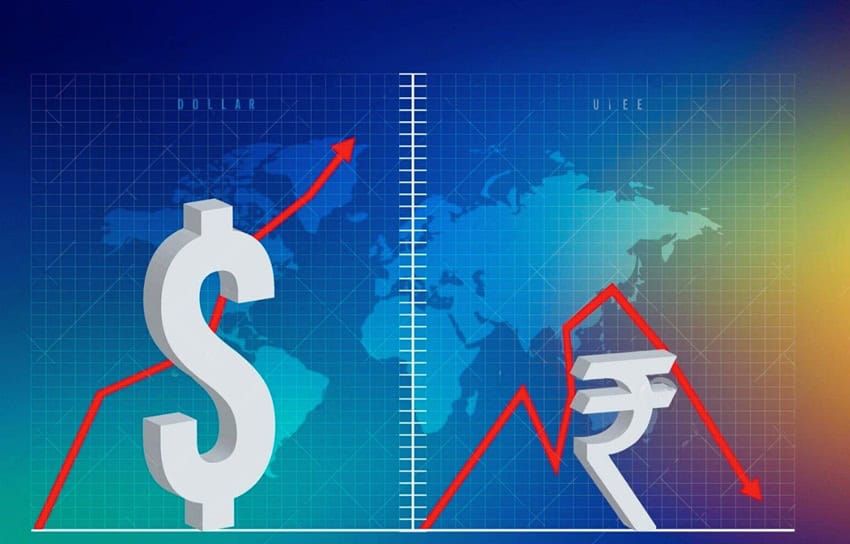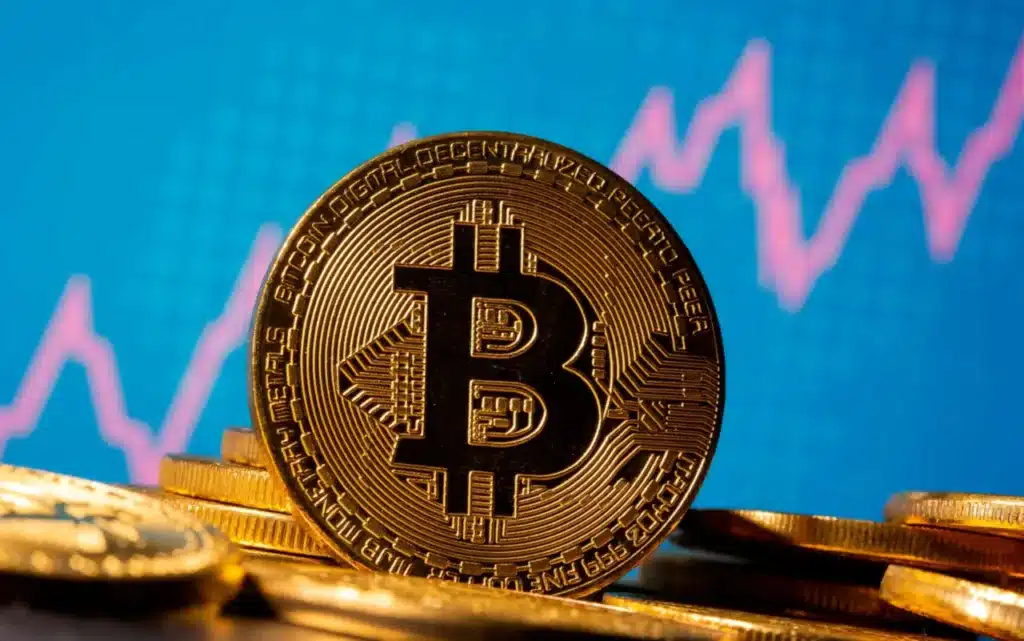The falling Indian rupee mostly depends on government policies and administrations; in the last 10 years, the rupee has fallen by 42%. The financial landscape of India is undergoing a significant transformation. The Indian rupee’s decline against the US dollar has reached unprecedented levels. Recently, it crossed the critical 84.50 mark, highlighting a complex economic challenge. This issue extends far beyond the trading floors.

Investors and economists are keenly observing the Indian currency depreciation. They understand its deep implications for India’s economic system. The currency’s continuous decline points to deeper structural challenges within the nation’s financial framework.
The rupee’s dramatic fall is more than just a number. It signifies real economic pressures affecting millions of Indian households, businesses, and international trade relationships. Grasping the underlying dynamics of this currency movement is essential for navigating today’s economic terrain.
Key Takeaways
- The Indian rupee has hit an all-time low against the US dollar
- Foreign Institutional Investors have withdrawn significant funds from Indian markets
- Long-term rupee depreciation trends show a consistent downward pattern
- Trade deficits and foreign investment play critical roles in currency valuation
- The depreciation impacts import costs, exports, and overall economic stability
Current State of the Indian Rupee vs. Dollar
The Indian rupee has notably declined in recent years, posing significant challenges to India’s forex market. This decline paints a complex picture of the country’s economic landscape, requiring detailed analysis.

The decrease in INR value has become a major concern for financial experts and policymakers. The rupee has hit unprecedented lows, crossing the 85-mark and nearly 86.63 against the US dollar.
Historical Exchange Rate Trends
In 1925, the Indian rupee vs. US dollar rate was 0.1; in 1947, it was 4.16. A decade ago, the rupee was valued at approximately ₹61 per dollar. This significant shift highlights the substantial change in India’s currency valuation. Recent data indicates a persistent downward trend, drawing global attention. 1 USD in INR in 1947 to 2024: Track Historical Exchange Rate
| Year | Exchange Rate (₹/USD) | Percentage Change |
|---|---|---|
| 2014 | 61.00 – 62.33 | Baseline |
| 2025 | 86.63 | ~42% Depreciation |
Recent Market Developments
India’s forex market faces significant challenges. The rupee has lost value for nine consecutive weeks, reflecting deep economic pressures. Foreign investor exits, and global economic uncertainties have exacerbated this volatile situation.
Key Economic Indicators
Several critical factors impact the rupee’s performance. Foreign exchange reserves have plummeted to $640 billion, an eight-month low. The Reserve Bank of India is actively intervening to stabilize the currency and prevent further depreciation.
Analysts foresee further weakening, predicting the rupee could reach 88-89.50 per dollar by mid-2025. The ongoing economic dynamics highlight the necessity for strategic monetary policies.
Understanding Why the Indian Rupee is Falling

The Indian rupee has faced significant challenges in recent years, and these challenges have become increasingly complex. From January to September 2023, the rupee fell about 12% against the US dollar. It crossed the Rs 70 per dollar mark in August 2023.
Several critical elements contribute to the rupee’s depreciation. Foreign institutional investors (FIIs) have been withdrawing investments, putting substantial pressure on the currency’s value. The Modi government’s failure to counter this through monetary interventions has worsened the currency’s vulnerability.
| Key Depreciation Factors | Impact |
|---|---|
| Foreign Fund Outflows | Significant negative pressure on rupee value |
| Trade Deficit | Increased demand for US dollars |
| Geopolitical Tensions | Investor sentiment disruption |
Global economic uncertainties significantly impact the rupee’s performance. The widening trade deficit, reaching $26.83 billion in October 2024, increases dollar demand for import payments. Inflation rates and interest rate differentials also complicate the currency’s stability.
Analysts predict the rupee will trade between 82.50 and 84.25 in the first quarter of FY25. Expectations are influenced by the current account deficit and foreign portfolio investment flows. The ongoing challenges necessitate strategic economic management to prevent further depreciation.
Economic Impact on Indian Markets and Trade
The falling Indian rupee introduces a complex mix of challenges and opportunities for the nation’s economy. A detailed analysis of the rupee’s value drop reveals the intricacies affecting various sectors of the Indian economy.
The trends in rupee devaluation significantly shape trade, investment, and market strategies. While depreciation poses risks, it also opens up strategic economic opportunities.
Import Cost Implications
A weaker rupee sharply increases import costs. With India’s crude oil import dependency at 88.1% in 2024, currency depreciation directly affects energy prices. The trade deficit hit a record of $37.8 billion in November 2024, highlighting significant economic pressure.
Export Sector Benefits
Currency depreciation paradoxically boosts export competitiveness. Industries like IT, pharmaceuticals, and textiles gain pricing advantages globally. Indian exporters have become more appealing as their products have become relatively cheaper for international buyers.
| Sector | Export Potential | Competitive Advantage |
|---|---|---|
| Information Technology | High | Reduced Service Costs |
| Pharmaceuticals | Medium-High | Affordable Medication |
| Textiles | Medium | Competitive Pricing |
Foreign Debt Servicing Challenges
Currency depreciation worsens foreign debt burdens. Companies with dollar-denominated loans face heightened repayment challenges. The RBI estimates the rupee to be 8% overvalued in real Effective Exchange Rate (REER) terms, adding to financial strain.
Strategic planning and adaptive monetary policies are essential to navigate these complex economic currents. They help mitigate negative impacts while capitalizing on emerging opportunities.
RBI Interventions and Policy Measures
The Reserve Bank of India (RBI) has been actively managing the decline of the Indian rupee. With nearly $700 billion in foreign exchange reserves, the central bank has various tools to tackle the rupee’s fall. These tools are essential for stabilizing the currency.

Direct market interventions are a key policy measure. The RBI sells dollars to boost the currency supply. In Q4 FY24, the bank implemented robust strategies to manage domestic liquidity and support the rupee’s valuation. This approach helps mitigate the impact of foreign investor withdrawals exceeding ₹1,43,000 crore.
| RBI Intervention Metrics | Value |
|---|---|
| Foreign Exchange Reserves | $700 billion |
| Market Intervention Scale | 1.6% of GDP |
| Projected Rupee Value | ~87 per dollar by March 2025 |
The India forex market news suggests a possible rupee depreciation of 8-10% due to global economic conditions. RBI’s strategy includes adjusting cash reserve ratios, purchasing bonds, and managing the Real Effective Exchange Rate (REER). The REER currently stands at 107.
These measures show the RBI’s dedication to maintaining economic stability in the face of global financial challenges.
Conclusion: Falling Indian Rupee
The Indian rupee’s devaluation trends paint a complex economic picture, requiring careful attention. The rupee has hit the 85-mark against the US dollar, showing a 3% drop in 2024. This situation requires businesses and investors to adjust to the changing financial situation. The rupee’s fall from ₹61 a decade ago to its current state highlights the major hurdles in maintaining currency stability.

The effects of rupee depreciation go beyond simple exchange rates. In 2024, foreign portfolio investors pulled out Rs 43,856 crore from Indian markets, showing growing economic doubts. Standard Chartered predicts the rupee could hit ₹87.75 by year-end, hinting at more downward pressure. India’s external debt has climbed to $711.8 billion, adding to the economic complexity.
Strategic planning is essential in this volatile economic climate. Despite India’s 10.3% growth in merchandise exports in November 2024 and $46.1 billion in FDI between April and September, the challenges are substantial. The RBI and policymakers must navigate these challenges, considering inflation, global economic conditions, and domestic market dynamics.
Looking forward, businesses and investors need to stay agile and proactive. Grasping the detailed causes of rupee depreciation is vital for managing risks and spotting opportunities in a constantly shifting economic landscape. The next few years will test India’s economic strength and flexibility against global financial hurdles.



